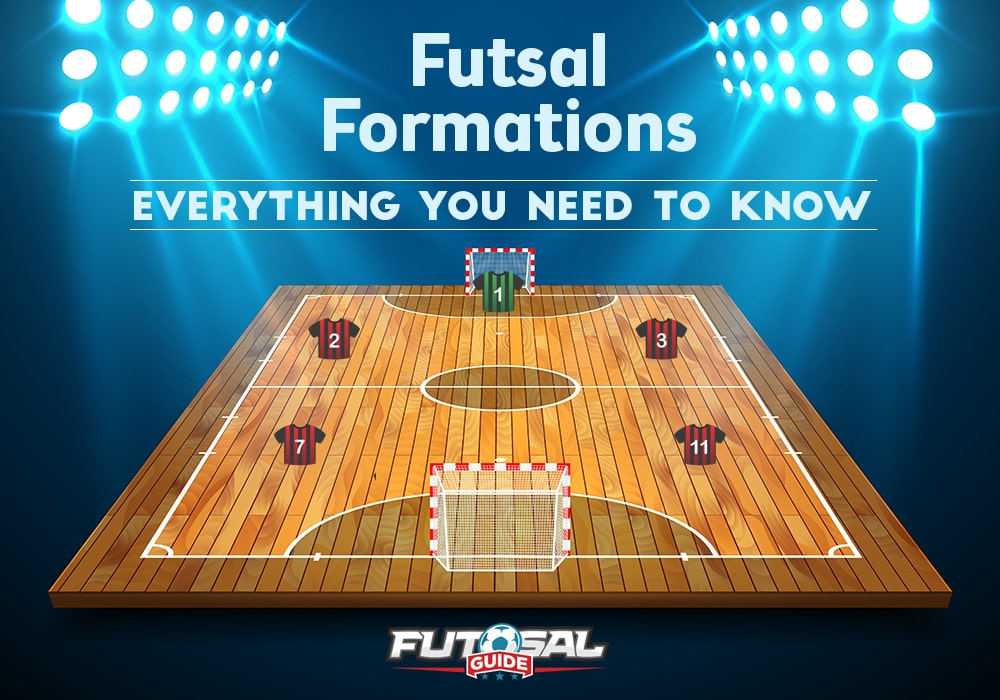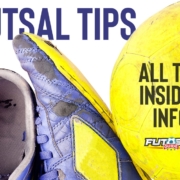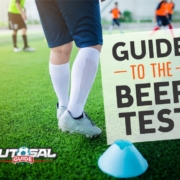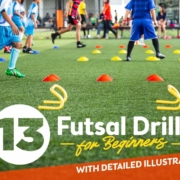Futsal is fast and free flowing game that can easily get away from any team who isn’t well prepared or doesn’t have a sound understanding of formations and how they can benefit from them in different circumstances.
The aim of this guide is to give you an understanding and appreciation of the different formations that can be used in futsal and why they can be effective in helping you and your team in dominating the futsal court.
So, what are the different futsal formations? The most widely used and accepted formations used in modern futsal are:
- The diamond
- The Y
- Hail Mary
- The 4-0
- The Box
- The Pyramid
- Parking the bus
There are of course other formations and tactics that can be used, however, we have focused on the most widely and common used ones. Once you know how they all work you can modify and create your own formations based of these.
The Diamond (1-2-1)
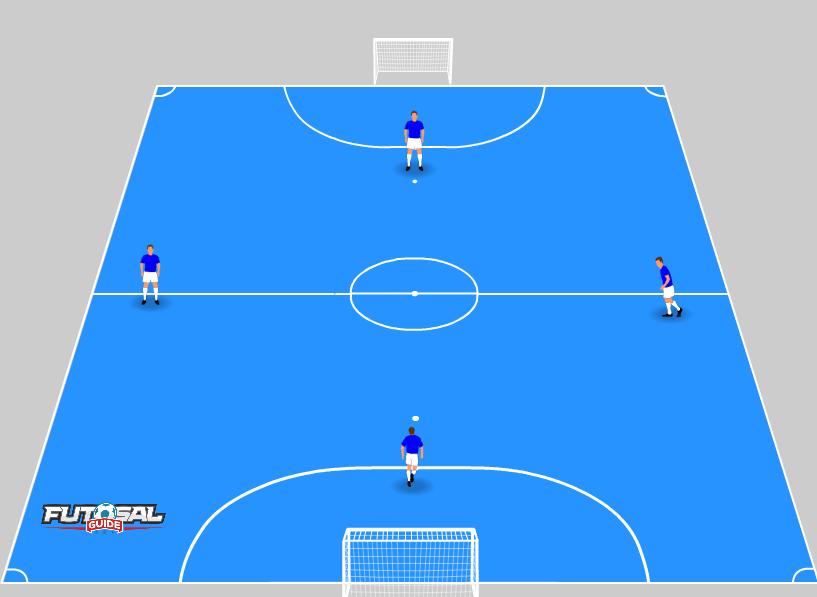
The diamond is one the most commonly used futsal formations.It allows for ease of use of players who are outright attackers and defenders, particularly useful when introducing outfield players to futsal for the first time.
The diamond works by having an advanced attacking player that heads up the top of the diamond. This player should be good at holding off defenders, turning defenders and laying the ball of the he wingers.
The quasi “full back/sweeper” holds up the bottom of the diamond and should be capable of defending strongly, have good vocal commands and be able to distribute the ball among teammates.
It’s important the sweeper has a good situational awareness and vision as they will often have times where the whole court is before them and they will be relied upon to make the right call.
The wingers in diamond need to be quick, able to track back and feed of the pivot and sweeper effectively to receive and then make the right decision when it comes to moving the ball around.
It’s critical that the wingers work together to ensure that the pivot is supported efficiently but not at the cost of leaving the sweeper exposed, this again will be assisted by the sweepert communicating what he sees to his teammates.
It’s ideal that all players on the team are comfortable playing these positions, if that’s not possible then back up players on the bench should have selected positions in which they are specialists in order to support the team given the high amount of subs used in futsal.
The Y (1-1-2)
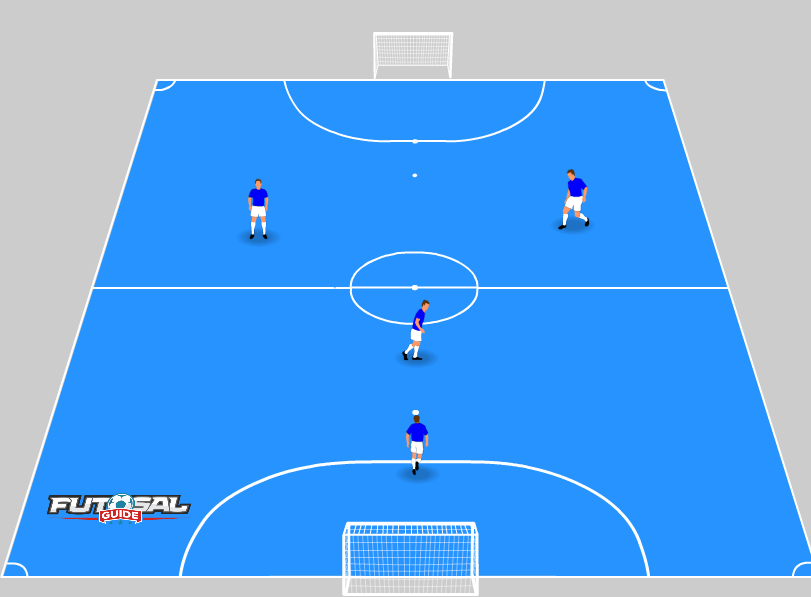
The Y formation is one that favours teams that are very strong going forward and are looking to overwhelm a weaker side or trying to peg back a few goals chasing the match.
The Y formation enables there to be two forward players who will act as “strikers” a the top of the formation, it’s important that these two players apply pressure on opposition players high in the offensive half to ensure their teammates are not overwhelmed.
A key benefit of applying high court pressure is that opposition mistakes can present scoring opportunities.
The midfielder that sits behind the two forward attackers holds a pivotal role of responsibility to not leave the last player of the formation exposed to attacks from the opposition.
Ensuring that they do not get caught out being to far forward while also assisting the advanced players while applying pressure is a fine balancing act, this role should only be carried out by a player who has a clear understanding of what’s required.
The last man in this formation much like any futsal formation needs to be sturdy in the tackle, if they are caught out in this formation while their teammates are far advanced they need to be able to quell 2v1 and sometimes 3v1 attacks.
It’s important not to over expose players that are not comfortable with defending and being under pressure.
The Hail Mary(1-0-3)

The Hail Mary formation is a last ditch effort to rescue a match that seems too far gone or to try and grab a las minute equaliser/winner in a do or die game.
Three players will act as advanced forwards with one defender. This formation is heavily reliant on high pressure in the attacking half with the objective of not letting the ball enter the defensive half as it will leave the solitary defender heavily exposed.
The players who are on the left and right of the court should be able to speedily assist the solitary defender in the event of an opposition attack.
These players need to be the fittest and most versatile on team as they will be needed to constantly attack, defend and apply pressure.
This a last ditch formation to save a game when there are no other options that seem plausible and should be used for the least amount of time as possible as it is a high risk/high reward scenario.
Park The Bus(3-0-1)
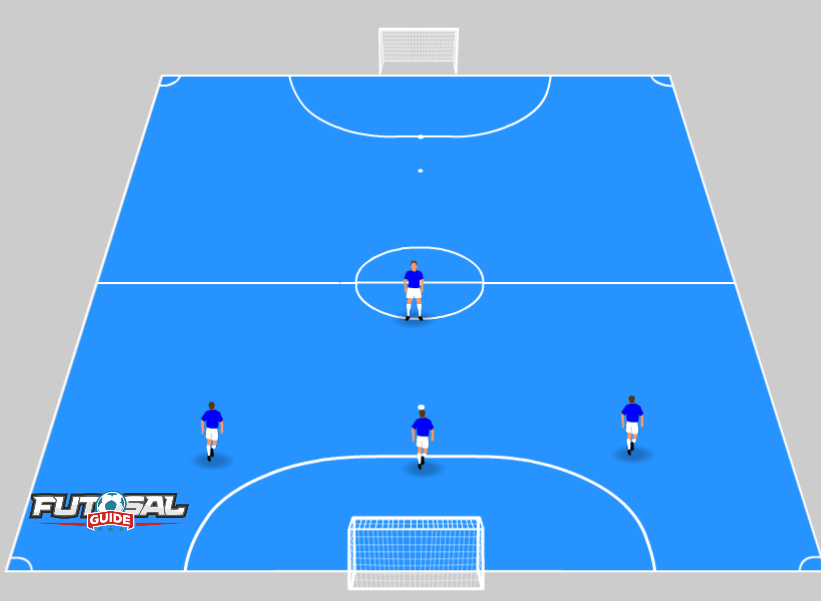
One that’s sure to make Jose Mourinho smile from ear to ear, parking the bus is great for defending a lead when times running or you want to maintain a buffer.
Three players will play as defenders with one at centre back and a left and right back, in basic soccer like terms. The left and right back should be agile players who can transition into wingers incase another formation has to be used.
There will be one solo attacker in the formations, I recommend using your strongest attacking player in this position.
Using a player who is creative, strong and able to give the opposition defence a hard time will be critical in not only maintaining an offensive reach but also relieving some of the pressure from your defensive players.
Another formation that shouldn’t be over used as there’s only so much defensive pressure any team can soak up before leaking a few goals, it’s also important to keep the subs rolling with this one to ensure players don’t get fatigued with the heavy defensive work rate.
The Box (2-2)
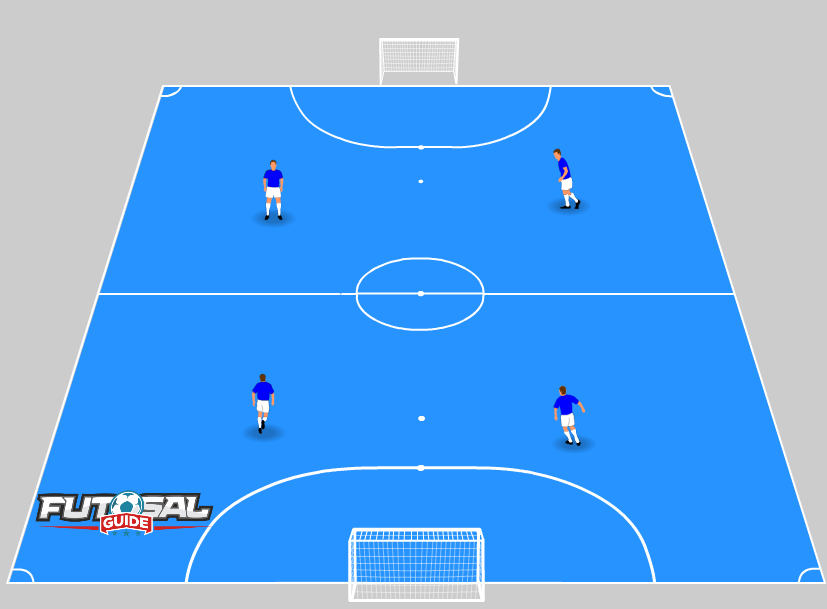
The box formation splits the team in half with attacking players and two defensive players.
This formation makes it clear who is responsible for what and is a formation that can be of most benefit to teams that have well-rounded players who can rotate between all four positions.
It’s important that players communicate well and have a good sense of movement, without both inexperienced teams and players can easily be caught out by opposition sides who will be able to tell fairly quickly if they know what they are doing.
Teams can practice using this formation in training to better familiarise themselves with the formation and focus on communication, the rotations and transitioning to and from other formations.
The Pyramid (2-1-1)
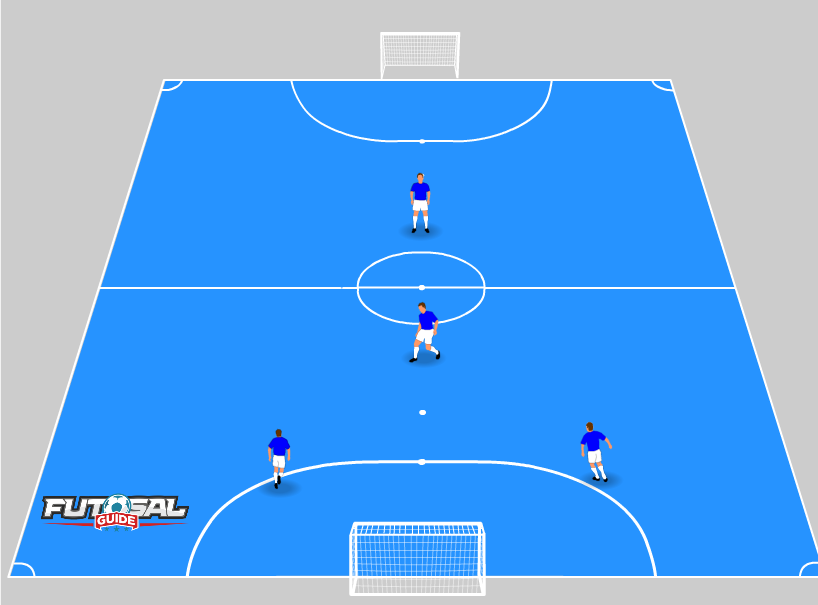
The Pyramid formation provides a good amount of defensive cover to the goalkeeper while maintaining an offensive outlet for the team.
By adding an additional player to defense teams will feel more comfortable moving forward but they do run the risk of their midfield and offensive players being overwhelmed by switched on teams.
The midfield and advanced attacking player need to work closely together in this formation to support each other in attacking movements and the attacker should also assist the midfielder in defensive duties to ensure that no one is caught out as much as possible.
Again another formation that should be extensively practiced outside of match day with an emphasis on transition to and from other formations, player rotation and pressing.
The 4-0

The 4-0 formation is an advanced tactic for advanced futsal players/teams that have a vast knowledge and experience in futsal and it’s formations.
With no positions set in stone, players will rotate between themselves, attack together, defend together and will keep opposition players guessing as to which position or tactic is being utilized at any given time.
A key focus is movement off the ball to open up passing and attacking options for players in possession but to also confuse the opposition and create spaces and openings.
It’s pivotal that any team that tries the 4-0 formation understands the possession retention is critical and that all players need to be on the same page and singing in harmony so to speak, anything less and it just won’t work.
If unable to properly master this technique then teams should focus on the traditional more basic formations that can be just as effective as the 4-0 formation.
Fitness Is Paramount
All of these formations are good and effective but what’s more important is the overall fitness levels of the players in the team.In order for everything to run as it should players need to be fit.
You won’t be able to get fit if you don’t train, cardio and familiarisation with the futsal court and ball are a must, if you want to perform at maximum capacity then you have to do the hard yards off the court to build up your fitness.
If you are new to futsal then you’ll need to organise/attend the teams training sessions and stay focused to ensure you and your teammates are able to meet the requirements come match day.
You can check out some of our drills for beginners here and an intro guide to running a futsal training session here if you like.
Communication
As important as fitness levels of the team is communication, without nothing will happened and nothing will work.
Players need to understand each other, they should be able to understand each other without talking at times and this will only happen if the team spends a lot of time together on the court and and also off it.
Team building exercises are paramount to this both on and off the court.
Getting It Right
These formations can all be very effective but it’s important that they are used at the right time when it would benefit the team the most.
By familiarising yourself/team to the formations and practicing them in training sessions you will improve as a unit more effectively when opposed to trying to implement new tactics for the first time on game day.
A great way to practice the formations is without even using a futsal ball and just focusing on the shape of the formation and transitioning into other formations.
This will assist players in gaining an appreciation and understanding of what exactly is required of them. Once everyone understands what’s required formation wise then you should introduce a ball and go from there.
What your team/players do outside of matchday such as training sessions and how often you train will be what determines how well you do on match day, it’s what separates the outstanding from the mediocre in everything not just futsal.









